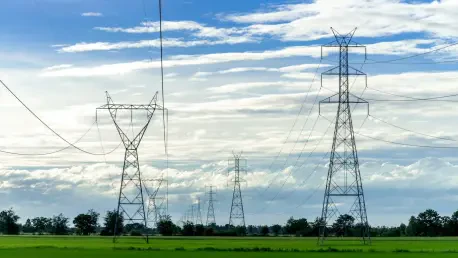The global energy landscape is undergoing significant shifts, with Russian electricity exports experiencing an alarming decline. A 44% decrease in exports to China has accentuated the issue, reflecting broader trends within the market. This analysis investigates these developments and outlines the implications for future electricity trade dynamics.
Factors Driving Market Changes in Russian Electricity Exports
The evolving scenario of Russian electricity exports is marked by complex interplays between geopolitical tensions, shifts in domestic demand, and environmental resource challenges. Understanding these factors is crucial for stakeholders seeking to anticipate and respond to market changes effectively. In particular, Russia’s capability to balance domestic consumption with export commitments has become increasingly challenging, highlighting the nuanced dynamics at play.
Historical Development of Energy Export Patterns
Russia’s historical role as a leading energy supplier has been defined by abundant resources and strategic location. Over the years, the nation’s energy export strategies have been shaped by fluctuating demands and policy shifts, which have influenced the current declining trends. This historical perspective provides essential context for stakeholders to understand emerging trade patterns and potential shifts within the global energy market.
Analyzing Primary Trends Influencing Export Volumes
Significant Decline in Exports to China
Russia’s electricity exports to China, one of its largest consumers, have witnessed a dramatic reduction. This 44% decrease is attributed to mounting domestic consumption demands and notable hydroelectric shortages. The challenges posed by balancing these factors have prompted a reevaluation of Russia’s energy export strategies, potentially affecting long-standing bilateral trade relations.
Consistent Trade with Regional Partners
Contrasting trends are observed with regional partners such as Kazakhstan and Mongolia, where trade has remained stable. In 2024, Kazakhstan represented nearly 54% of Russia’s total electricity exports. This consistency underscores the significance of regional alliances, though over-reliance poses risks, suggesting a need for diversification and strengthening of existing partnerships.
Navigating Resource and Geographical Constraints
Russia’s regional constraints, particularly within the Russian Far East, further complicate export strategies. Infrastructure limitations and disruptions in local power systems have been substantial in curtailing export capabilities. These challenges highlight the importance of developing adaptive strategies that cater to both regional and international demands.
Projected Trends and Technological Adaptations
The future of Russian electricity exports may see transformation through technological innovations and shifts in energy paradigms. Emphasizing sustainable practices and diversification could emerge as focal points within Russia’s export strategy. Anticipated advancements in energy production technology may redefine Russia’s position within the global electricity market, ensuring long-term stability and growth.
Strategic Insights and Implications for Stakeholders
The insights derived from analyzing Russian electricity export trends signal several strategic considerations for stakeholders. Businesses and policymakers must consider adopting adaptable and diversified approaches to navigate such fluid market conditions. By interpreting these market dynamics, stakeholders can align their operations with cutting-edge practices and maintain a competitive advantage in a changing landscape. Understanding the subtle dynamics of supply and demand adjustments can empower stakeholders to better position themselves within the sector.
Reflecting on these findings, the decline of Russian electricity exports offers valuable lessons for regional and global energy systems. The interplay of domestic consumption, regional partnerships, and technological advancements emphasizes the multifaceted nature of energy export strategies. While current declines pose challenges, they also offer opportunities for reevaluating and strengthening global energy frameworks.









